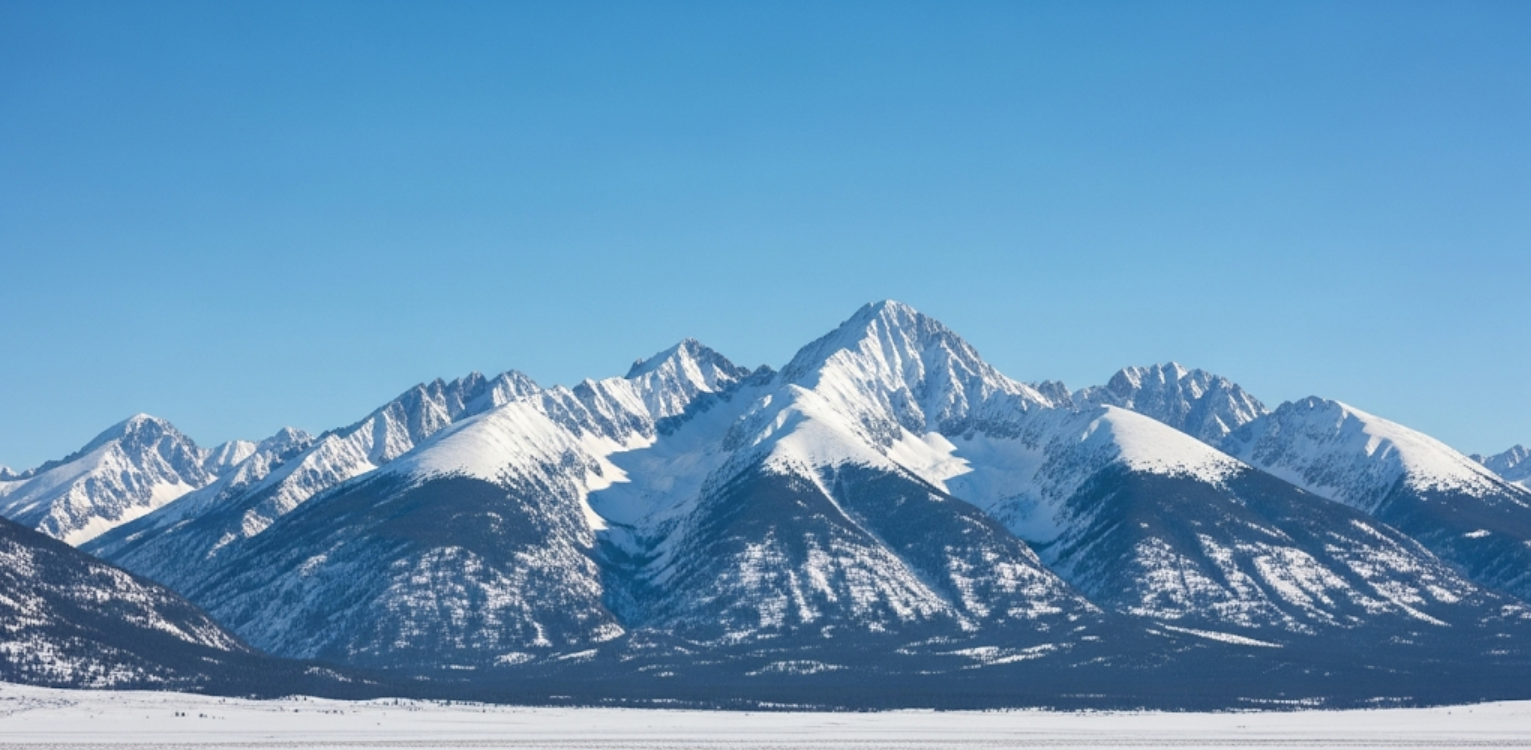
The Final Approach: Pilot’s Perspective on the Most Treacherous Airport Landings in the US
For the average passenger, a turbulent approach or a firm landing might be a fleeting moment of anxiety. But for the pilots at the controls, certain U.S. airports consistently present a unique set of challenges that demand the highest levels of skill, precision, and situational awareness. We’ve heard from pilots who have landed at these airports, not just from a technical standpoint, but also from the very real, and sometimes stomach-turning, perspective of the men and women in the cockpit.
High Altitude and Thin Air: The Rocky Mountain Challenges
Higher elevation airports are a classic challenge. The thinner air at altitude impacts everything from engine performance to landing speeds. As one pilot aptly puts it, landing at a high-altitude airport can feel surreal.
"DEN always feels weird to me, mainly because of the altitude. It feels like you’re rolling forever and then finally you’re up in the sky."
Denver International Airport (DEN) sits at an elevation of 5,434 feet. This "hot and high" environment means aircraft need a longer takeoff and landing roll. The less dense air provides less lift and less engine thrust, making the aircraft feel more sluggish and requiring higher speeds to stay airborne. This is a common characteristic of high-altitude airports and a significant factor in pilot training and procedures.
The challenge is even more acute at airports nestled within the Rocky Mountains.
"Aspen or Vail/Eagle"
Aspen-Pitkin County Airport (ASE) and Eagle County Regional Airport (EGE) are notorious among pilots. With field elevations of 7,820 feet and 6,547 feet respectively, and surrounded by mountainous terrain, these airports demand specialized training and strict adherence to complex approach and departure procedures. The combination of high altitude, potential for severe weather, and challenging terrain makes these two of the most demanding airports in the country for commercial operations. Similarly, airports in Montana and New Mexico present their own high-altitude hurdles.
"Bozeman or Billings MT... ABQ"
Bozeman Yellowstone International Airport (BZN) and Billings Logan International Airport (BIL), while at lower elevations than Aspen, still present density altitude challenges, especially in the summer. Albuquerque International Sunport (ABQ) at 5,355 feet, also requires pilots to be keenly aware of the performance-degrading effects of high altitude.
Short Runways: Where Precision is Paramount
There's nothing quite like the feeling of landing on a runway that seems to disappear before your eyes. Several U.S. airports are famous—or infamous—for their shorter-than-average runways, leaving little room for error.
"EYW you can definitely tell you’re on a shorter runway."
Key West International Airport (EYW) boasts a runway of just 5,076 feet. This limitation is so significant that it can even impact baggage allowances on certain flights.
"EYW runways are so short they limit the bags you can check. One per person."
This isn't just an inconvenience for travelers; it's a reflection of the performance calculations pilots must make. A shorter runway means less stopping distance, and every pound on the aircraft is factored in.
California is home to a couple of other well-known short-field challenges.
"BUR and SNA both feel as short as they are."
Hollywood Burbank Airport (BUR), with its longest runway at 6,886 feet, and John Wayne Airport (SNA) in Orange County, with a main runway of just 5,701 feet, are prime examples. SNA, in particular, is legendary for its unique departure profile.
The steep, power-back departure at John Wayne is a noise abatement procedure that has pilots and passengers alike feeling a moment of weightlessness. It's a thrilling and demanding maneuver that is a testament to the skill of the pilots who fly it regularly.
The Urban Jungle: Congestion, Obstacles, and Unique Procedures
Some of the most challenging landings in the U.S. aren't in remote, mountainous regions, but in the heart of our biggest cities.

"Midway is next-level nerve-racking. The runways feel extra short, and landing in the middle of a densely packed neighborhood just adds to the stress. The landings there are always rough, and the second those wheels touch down, the pilots have to slam the brakes like their life depends on it—because, well, it kind of does. And that’s not even mentioning the turbulence, because Midway always seems to be windy as hell."
Chicago Midway International Airport (MDW) is a classic example of a major airport constrained by its urban environment. Its intersecting runways, the longest of which is 6,522 feet, combined with the often-inclement Chicago weather, make it a perennial challenge. The close-in obstacles and the need for aggressive braking are always on a pilot's mind when landing at Midway.
San Diego International Airport (SAN) also presents a unique urban challenge.
"SAN for sure. Single runway and lot of traffic. And wind conditions. And fog requiring reverse runway operations"
SAN is the busiest single-runway commercial airport in the United States. The approach to runway 27 takes aircraft over downtown San Diego, with buildings seemingly just a stone's throw away. The prevailing winds and coastal fog can often lead to "reverse operations," where aircraft land and depart to the east, a less common and often more challenging procedure.
Demanding Approaches on the East Coast
"As a pilot, my favorite approaches were the Expressway visual into LGA, (long gone), the river visual into DCA (I assume it's long gone but I haven't flown into there in a long time)..."
While the famous "Expressway Visual" to LaGuardia Airport's (LGA) runway 31 is indeed a thing of the past, replaced by a more modern RNAV (GPS) approach, its legacy lives on in the memories of pilots who flew it. The "River Visual" to runway 19 at Ronald Reagan Washington National Airport (DCA), however, is very much still in use. This approach requires pilots to follow the Potomac River, making a series of turns at low altitude to align with the runway, all while navigating some of the most restricted airspace in the world. It is, without a doubt, one of the most visually stunning and technically demanding approaches in the country.
"DCA is acknowledged as the most dangerous airport in the US for at least 50 years."
While "most dangerous" might be a stretch from a statistical standpoint, the complexity of the approaches and the unforgiving nature of a mistake at DCA certainly place it high on the list of challenging airports.
The Elements at Play: Wind, Weather, and Topography
Beyond the man-made challenges of runways and airspace, Mother Nature often has the final say in the difficulty of a landing.
"PSP - I've had experiences that because of wind/the mountains we had to make several attempts at landing that were very frightening"
Palm Springs International Airport (PSP) is notorious for its wind shear, a sudden change in wind speed or direction, caused by the surrounding mountains. This can make for a bumpy and unpredictable final approach, often requiring go-arounds.
The heat of the desert also plays a significant role in aviation.
"Phoenix, Las Vegas and Tucson when it’s super hot out. The air makes for fun landings."
At airports like Phoenix Sky Harbor (PHX), Harry Reid International in Las Vegas (LAS), and Tucson International (TUS), extreme summer temperatures lead to high density altitudes, reducing aircraft performance and making for longer takeoff and landing rolls, similar to the challenges at high-elevation airports.
Then there are the airports where the topography itself is the primary hazard.
"West Virginia Yeager International is one of the most dangerous in the US....only because it's barely a 7000ft runway and on top of a mountain so no room for error...."
Charleston's Yeager Airport (CRW) is built on a flattened mountaintop, with steep drop-offs at the end of the runway. This leaves absolutely no margin for error on takeoff or landing, a fact that is always at the forefront of a pilot's mind when operating there.
A Nod to the Past and the Global Stage
While this analysis focuses on the U.S., it's impossible for a pilot to discuss challenging approaches without mentioning some international legends.
"Not in the US, but London City for me is the most exciting approach/take off. Small runway, middle of the city, angle of approach is like nothing else. The only thing that comes close was Kai Tak which unfortunately is no more."
London City Airport (LCY) requires a steep 5.5-degree approach angle, significantly steeper than the standard 3 degrees, due to obstacles in the city. The comparison to Hong Kong's old Kai Tak Airport is a high compliment in the aviation world. The infamous "Checkerboard" approach to Kai Tak's runway 13, which required a sharp, low-altitude right turn to align with the runway, is the stuff of aviation legend.

The Final Word: A Matter of Perspective and Proficiency
What one pilot finds to be a "next-level nerve-racking" experience, another might describe as "fun" or "exciting." This difference in perspective underscores the rigorous training and professionalism that is the hallmark of commercial aviation. While passengers may grip their armrests, pilots are executing carefully planned and highly practiced procedures.
The airports listed here, each with its unique combination of challenges, are not "dangerous" in the sense that they should be avoided. Rather, they are a testament to the remarkable capabilities of modern aircraft and the exceptional skill of the pilots who fly them. The next time you experience a thrilling takeoff from John Wayne or a windy approach into Midway, take a moment to appreciate the incredible dance of skill and precision happening on the flight deck.



Leave a comment
This site is protected by hCaptcha and the hCaptcha Privacy Policy and Terms of Service apply.